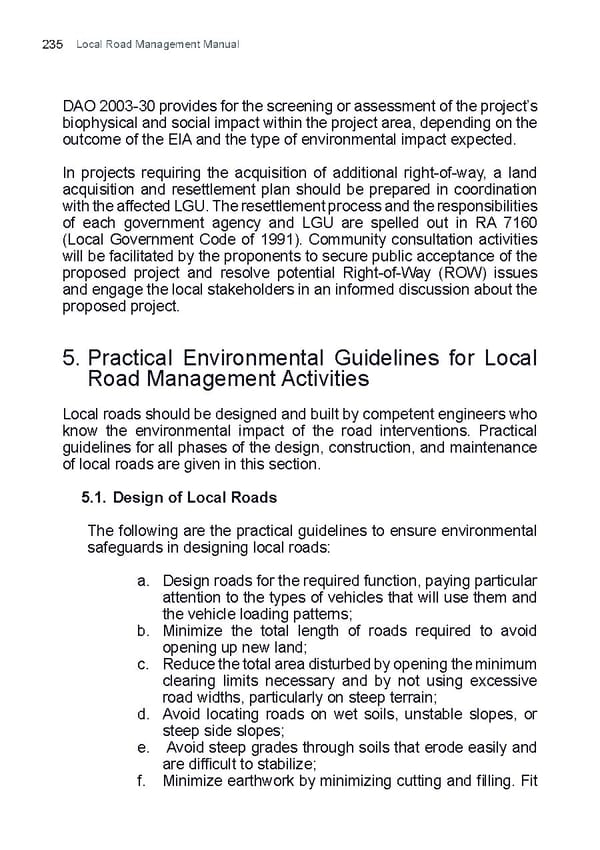Local Road Management Manual 235 DAO 2003-30 provides for the screening or assessment of the project’s biophysical and social impact within the project area, depending on the outcome of the EIA and the type of environmental impact expected. In projects requiring the acquisition of additional right-of-way, a land acquisition and resettlement plan should be prepared in coordination with the affected LGU. The resettlement process and the responsibilities of each government agency and LGU are spelled out in RA 7160 (Local Government Code of 1991). Community consultation activities will be facilitated by the proponents to secure public acceptance of the proposed project and resolve potential Right-of-Way (ROW) issues and engage the local stakeholders in an informed discussion about the proposed project. 5. Practical Environmental Guidelines for Local Road Management Activities Local roads should be designed and built by competent engineers who know the environmental impact of the road interventions. Practical guidelines for all phases of the design, construction, and maintenance of local roads are given in this section. 5.1. Design of Local Roads The following are the practical guidelines to ensure environmental safeguards in designing local roads: a. Design roads for the required function, paying particular attention to the types of vehicles that will use them and the vehicle loading patterns; b. Minimize the total length of roads required to avoid opening up new land; c. Reduce the total area disturbed by opening the minimum clearing limits necessary and by not using excessive road widths, particularly on steep terrain; d. Avoid locating roads on wet soils, unstable slopes, or steep side slopes; e. Avoid steep grades through soils that erode easily and are diiffcult to stabilize; f. Minimize earthwork by minimizing cutting and iflling. Fit
 LRM Manual CMGP Page 234 Page 236
LRM Manual CMGP Page 234 Page 236